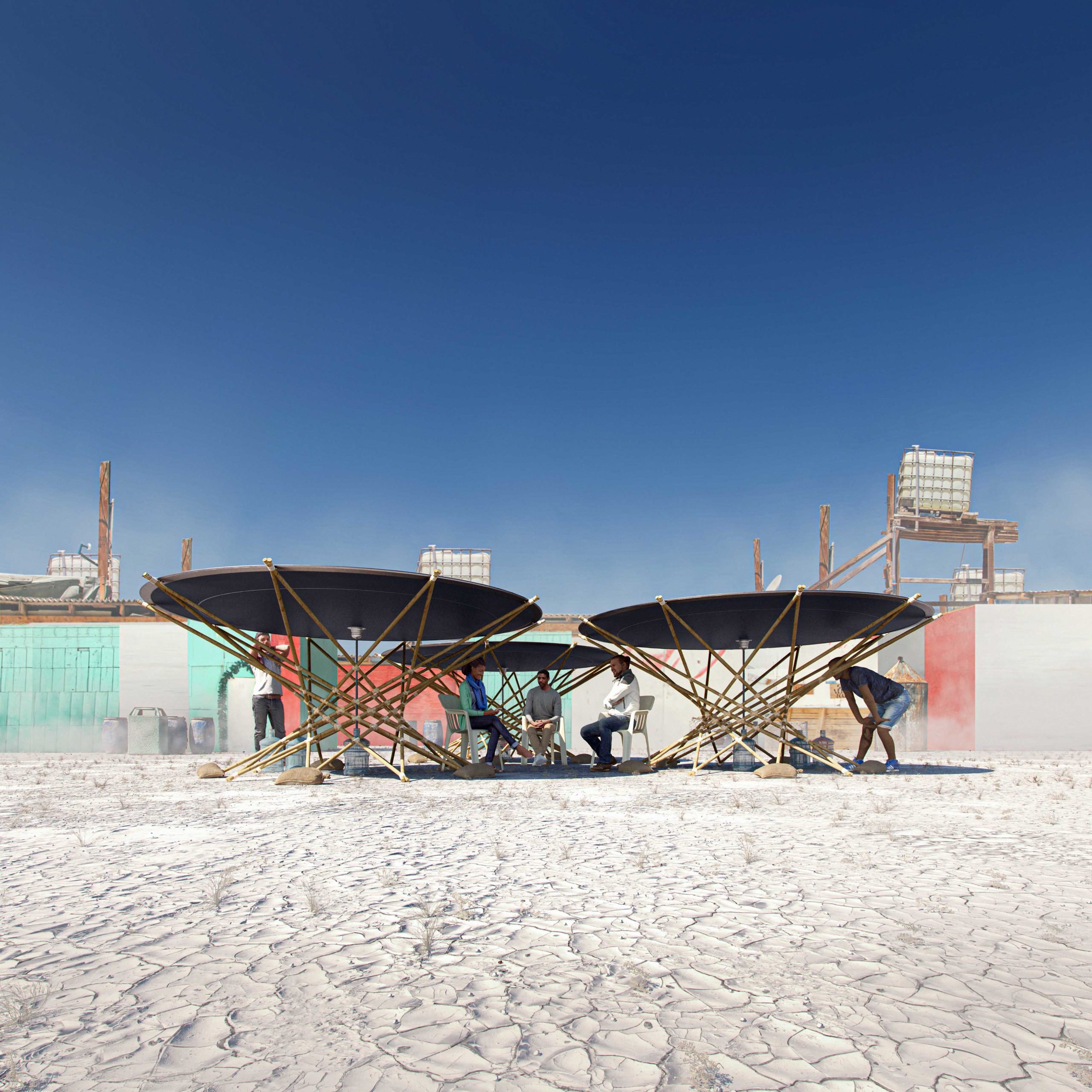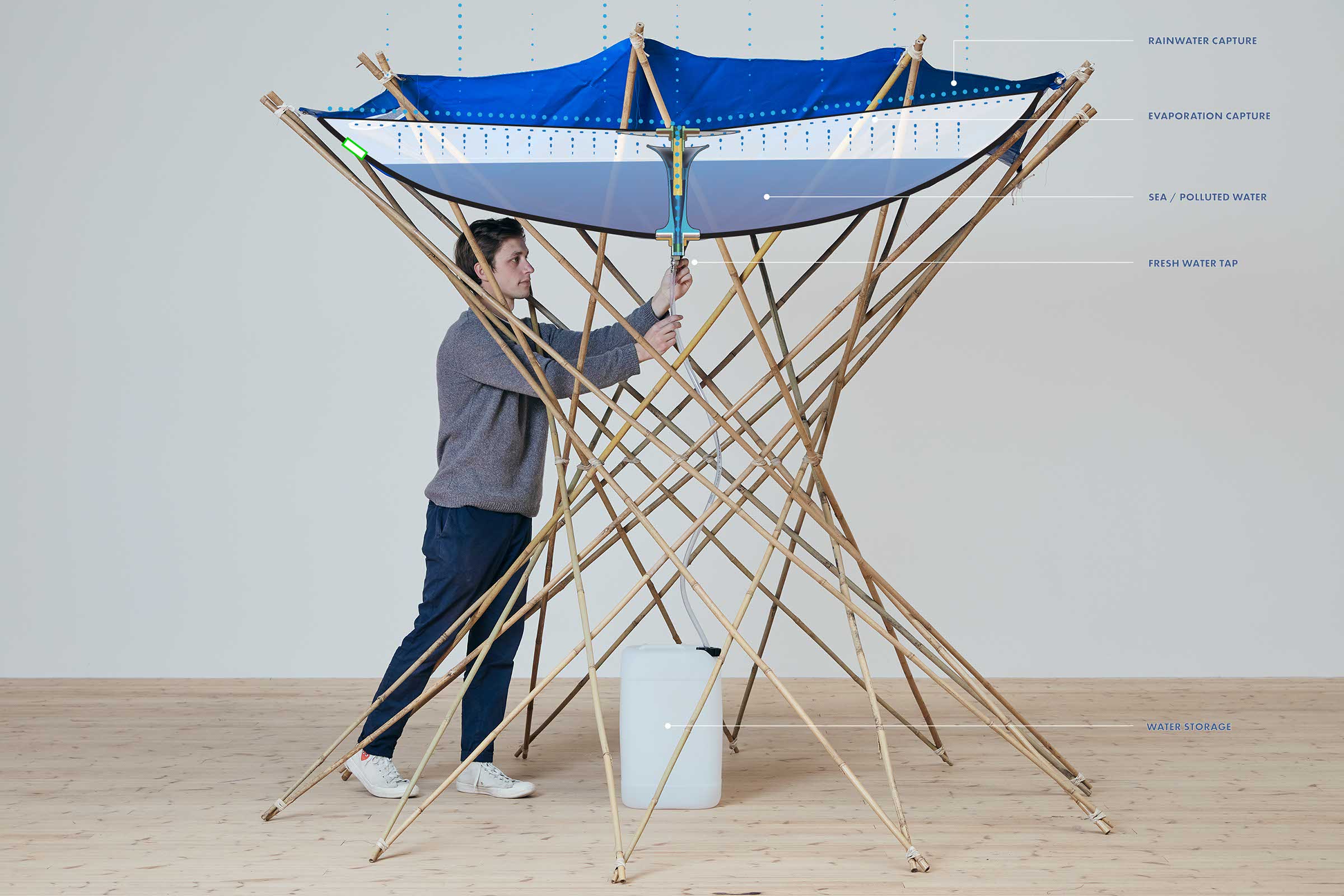Portable Solar Distiller | Henry Glogau

Useful information
- Team members
- Country
- —
- Keywords
- -
Detailed Description
A low tech solution utilizing sunlight to distill polluted and sea water. The portable design merges local resource production with community architecture, providing freshwater and a shaded gathering place. A lightweight, versatile structure configurable in different ways and materials, adapting to local environments and user needs.
Project Details
- Does your design take social and cultural challenges and human wellbeing into consideration?
Collaboration was at the core of the design process. I wholeheartedly embraced the idea that citizens should be active participants in the creation of solutions that directly impact their lives. In Nueva Esperanza, we organized community workshops, allowing residents to contribute their local knowledge and expertise. Together, we co-designed and built the distiller using readily available materials, fostering a sense of ownership and pride among the community members. By encouraging co-creation and co-build, the project established a strong social and emotional connection within the community, making resource production more symbiotic with their living environment. Through meaningful and participatory co-design approaches, we fostered a sense of collective responsibility and empowered the community to take ownership of their resources and future.
- Does your design support sustainable production, embodying circular or regenerative design practices?
In the context of the Portable Solar Distiller project, the value of Regenerative holds deep significance for me. Working closely with the community of Nueva Esperanza on an earlier stage distiller project, I witnessed the importance of renewing and restoring the systems that sustain us. By harnessing the abundant sunlight and employing sustainable, low-tech methods, the distiller became a testament to their determination and resourcefulness. Offering access to clean drinking water while respecting and preserving the environment. Seeing the community's active participation and enthusiasm in embracing regenerative design principles was truly inspiring. Together, we co-created a solution that addressed resource scarcity and empowered individuals to take control of their own well-being. By focusing on the health of both social and environmental systems, the Portable Solar Distiller became a catalyst for positive change and a step towards a more regenerative future
- Does your design use principles of distribution and open source?
Openness is deeply rooted in my journey with the Portable Solar Distiller, and it stems from my experiences within the community of Nueva Esperanza. From the moment I embarked on this project, I recognized the importance of sharing and transparency. I wanted to ensure that the design processes and resources were accessible to all, empowering individuals to replicate and adapt the distiller according to their specific needs. Witnessing the community's active participation and enthusiasm reinforced my belief in the power of openness. It became clear that by fostering a culture of sharing and collaboration, we could create a widespread solution that transcended geographical boundaries. Through openness, we not only addressed water scarcity but also sparked a movement where people could come together, exchange knowledge, and collectively contribute to improving access to clean water for all.
- Does your design promote awareness of responsible design and consumption?
In the creation of the Portable Solar Distiller, I was deeply influenced by the value of ecosystemic design. It was essential for me to understand the intricate connections between cultural, natural, and social aspects and incorporate this understanding into the design process. By embracing this holistic approach, I aimed to improve the overall health of both the community and the environment. The distiller became more than a solution to water scarcity—it became a symbol of interconnectedness and sustainable living. Through the integration of resource production with community architecture, it provided freshwater while also serving as a shaded gathering place. This approach fostered a sense of harmony with the natural surroundings and promoted the well-being of both the social and natural systems.
Images


